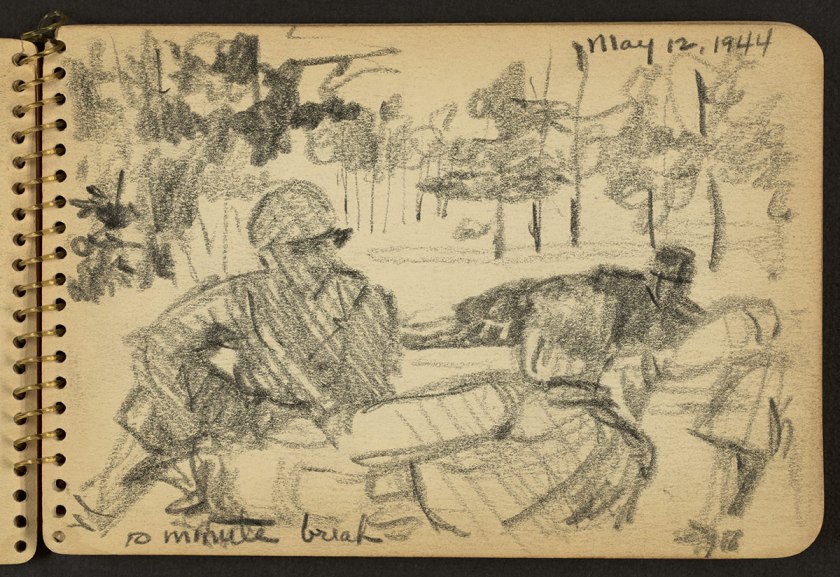
Victor Lundy is an American architect who has enjoyed an exceptional career. One of the leaders of the so-called Sarasota School of Architecture, he designed many buildings that are still revered for their innovation and exemplary modernist architectural elements. His Warm Mineral Springs Motel in Florida is listed in the National Register of Historic Places; his U.S. Tax Court Building in Washington, D.C., is striking and bold; and he was honored by the Smithsonian in 2013.
Before he became an architect, Lundy was a soldier who fought in World War II, and during his time abroad, he created hundreds of evocative sketches of life at war.
Born in New York City, Lundy began drawing as a child and eventually attended New York University to study architecture. (He would later graduate from Harvard and move to Sarasota, Florida, to begin his career.) Excited about the opportunity to help rebuild Europe after the war, he enlisted in the Army Special Training Program (ASTP) in 1942 at the age of 19. But he quickly found himself thrown into the infantry.
Serving as a soldier in the U.S. 26th Infantry Division, Lundy essentially sketched his way through the war. He drew whatever was around him, which included men at rest, casualties, forced marches, and French villages.
When a surgeon noticed his sketches while Lundy was being treated for war wounds, Lundy was asked to sketch a new medical procedure that the surgeon was developing. This assignment allowed Lundy to miss eight months on the front lines that proved dangerous for the other soldiers involved (i.e. it may have saved his life).
During his experience at war, Lundy filled up more than 24 small spiral-bound sketchbooks, three inches by five inches in size, with drawings. Eight of those sketchbooks have survived. He donated them to the Library of Congress in 2009. The sketchbooks contained a total of 158 pencil drawings.
Take a look at some of them below to get a unique glimpse into a soldier’s life during World War II.
—RealClearLife staff
This article appeared in an InsideHook newsletter. Sign up for free to get more on travel, wellness, style, drinking, and culture.